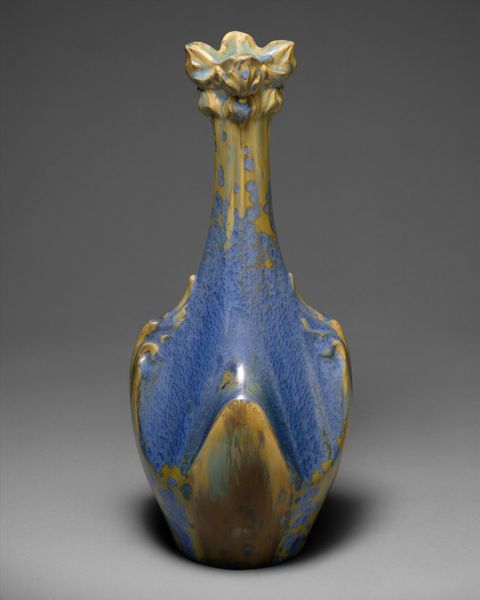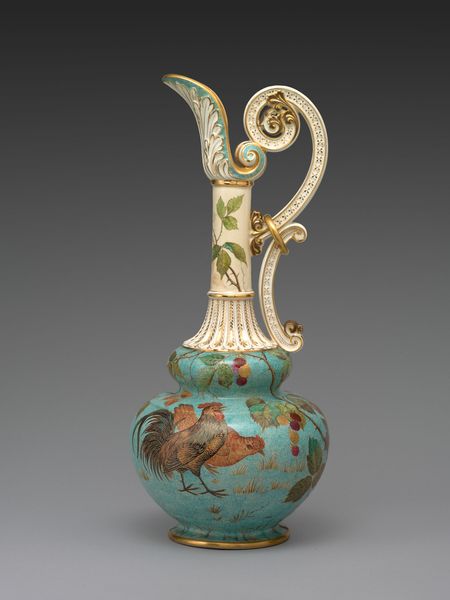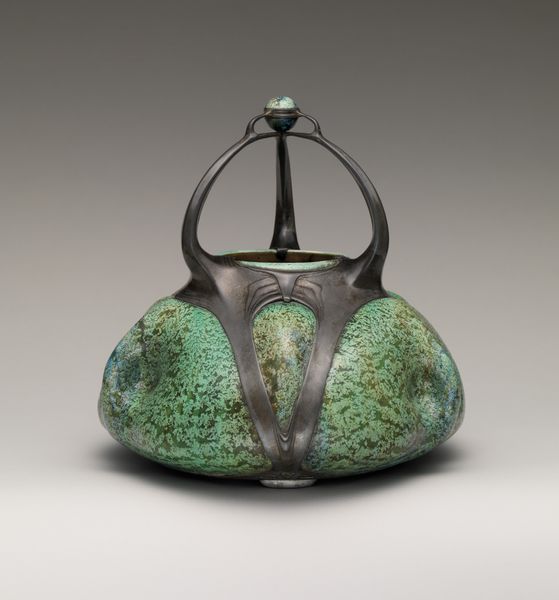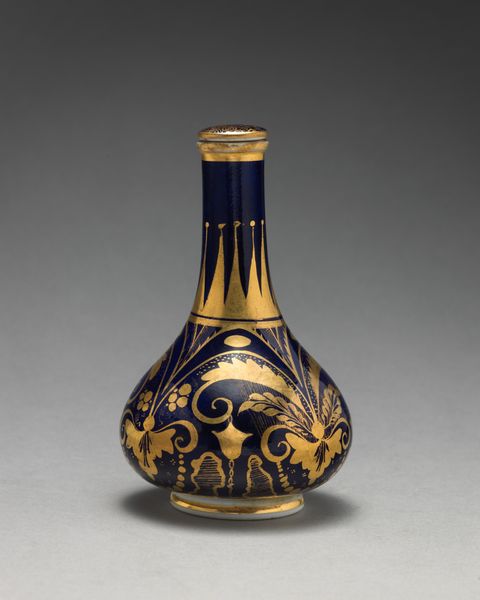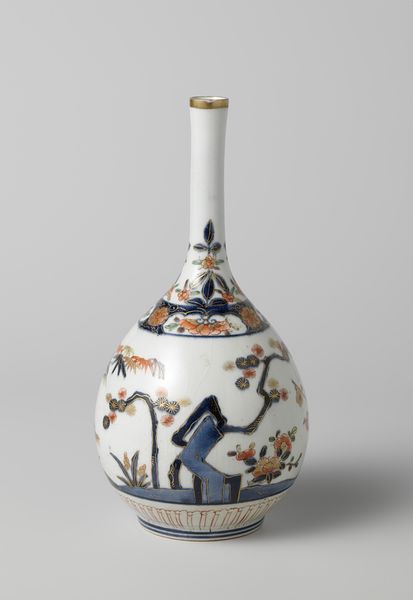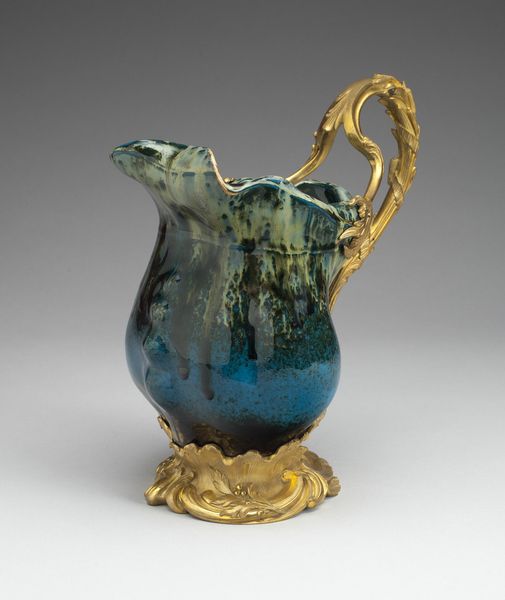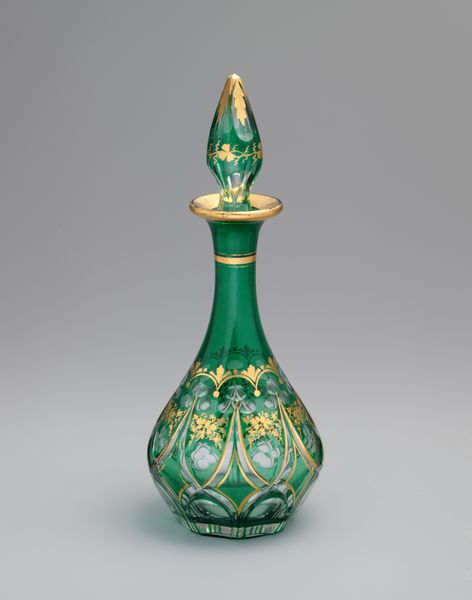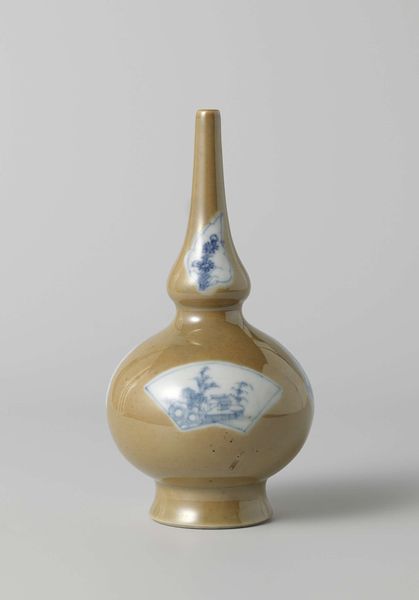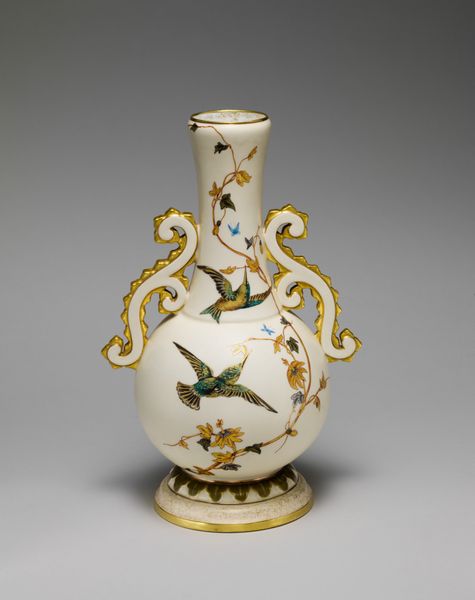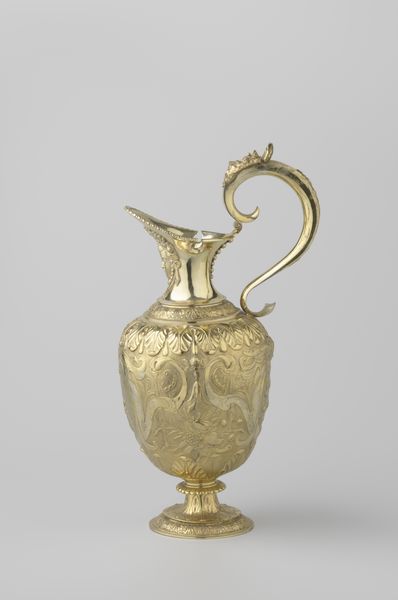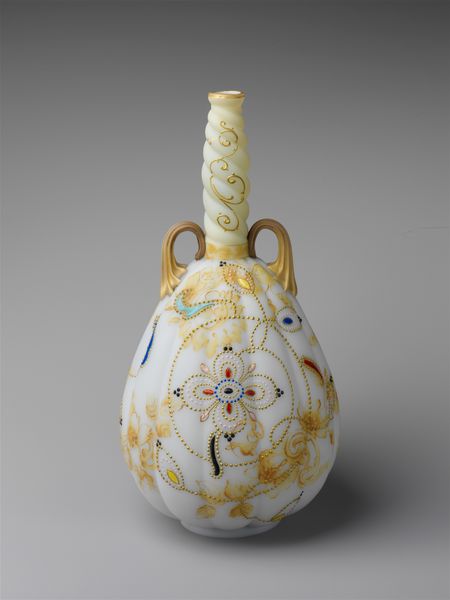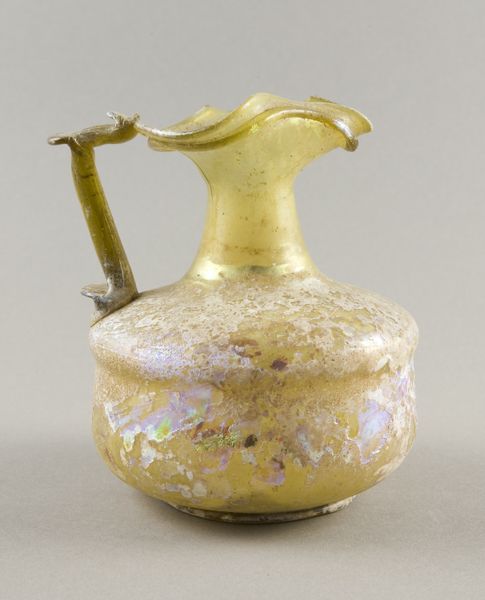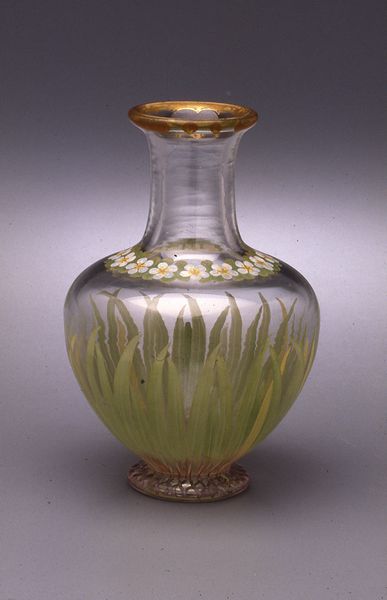
ceramic
#
art-nouveau
#
ceramic
#
figuration
#
ceramic
#
decorative-art
Dimensions: height 26 cm, width 21.0 cm, depth 17.8 cm
Copyright: Rijks Museum: Open Domain
Editor: This ceramic vase, titled "Vaas met pijlkruid, waterlelies en vlinders" or "Vase with Arrowhead, Water Lilies and Butterflies", was created sometime between 1895 and 1904 by Firma Wed. N.S.A. Brantjes en Co. It really captures the beauty of nature with its delicate depictions of flora and fauna, giving off a peaceful yet decorative vibe. How do you interpret this work? Curator: I see a powerful statement embedded within its decorative Art Nouveau style. Think about the late 19th century, a period of rapid industrialization. The Art Nouveau movement, with its emphasis on nature, can be interpreted as a reaction against this, a yearning for a pre-industrial harmony. The water lilies, butterflies, and arrowhead are not merely aesthetic elements; they're symbols of growth, transformation, and resistance against the rigid, often dehumanizing, structures of the modern world. Editor: So you’re saying the vase isn’t *just* pretty? Curator: Exactly. It’s tempting to dismiss decorative arts as purely aesthetic, but that overlooks their potential as vehicles for social commentary. The emphasis on handcrafted ceramics is in itself a political statement, a rejection of mass production and a celebration of individual artistry. The artist seems to invoke feminine symbolism via its shape and decoration; would you agree this object celebrates a divine feminine that resists masculine industrialization? Editor: That's fascinating. I hadn't considered the resistance aspect before. I was more focused on its serene beauty. Now that you point it out, the focus on natural themes as a counter-narrative to industrialization is really clear. Curator: And notice how this return to natural motifs also corresponds with shifting perspectives on gender and the societal role of women in the home. It suggests a connection between femininity, nature, and the domestic space. What have you learned about Art Nouveau? Editor: I’ve come to understand how movements within art function as both a matter of aesthetics and as cultural dialogue to what’s occurring in society. Curator: I couldn’t agree more. By viewing the art object through lenses such as gender, labor, and class, you can create deeper insights.
Comments
No comments
Be the first to comment and join the conversation on the ultimate creative platform.
